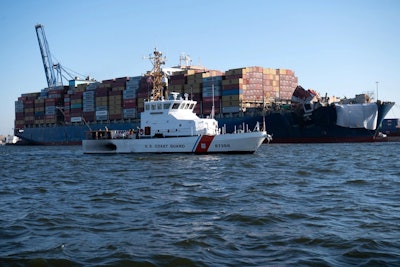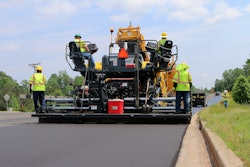
The cargo ship Dali left the Baltimore Port on June 24, three months after it caused the fatal collapse of Baltimore’s Francis Scott Key Bridge.
Now that the wreckage of the collapsed bridge that carried I-695 over the Patapsco River has been cleared and ship traffic has resumed to normal for the Port of Baltimore, state and federal leaders are planning for a replacement bridge.
The steel truss bridge over the Patapsco River was 1.7 miles long, including approaches, and carried an average of 31,000 vehicles a day when it was struck by Dali on March 26 and immediately collapsed, blocking the port channel until its clearing almost three months later. The Dali was stuck under the collapsed bridge, along with its crew, until June 10 when it was freed and towed back to port. The ship left the port June 24 for the port of Norfolk, Virginia, where its remaining containers will be removed, and it will undergo final repairs.
Though the primary focus has been on the cleanup, Maryland leaders have been pushing for federal funding for a bridge rebuild, and President Joe Biden has committed to obtaining federal money for the project. The Key Bridge opened in 1977 and was the second-longest continuous-truss span in the U.S.
The Maryland Transportation Authority released a request for proposals for design-build teams May 31 and set a June 24 deadline. MDTA plans to select the team this summer and expects to have a new bridge completed by Fall 2028.
Design work would begin in the fall. MDTA is also conducting community surveys to get feedback on the project.
Plans, so far, call for building the replacement in the same location as the former span. Preliminary cost estimates are close to $2 billion. The Baltimore BRIDGE Relief Act was introduced in the U.S. Senate and House in April to remove the 10% cost-share requirement for federal emergency relief for disaster-damaged highways and bridges.
Before the MDTA’s request for proposals, the Italian-based Webuild Group, whose U.S. subsidiary is Lane Construction, sent a preliminary design for a replacement. Its design is for a cable-stayed span that can withstand impact as well as enable larger ships to enter and exit the port.
The design calls for a 213-foot-high bridge, about 30 feet higher than the Key Bridge, and a main span that is 2,300 feet, which is 1,100 feet longer than the old span. It would also be wider by one lane in each direction.
Meanwhile, Skanska continues the remaining cleanup of the wreckage under a $50 million contract with MDTA. That work, which involves debris removal, disposal and cleanup at the five collapsed spans, is expected to be finished in July, according to the company.
 Could this be the future Key Bridge? Italian-based Webuild Group submitted this rendering of a preliminary design. Design-build teams had a deadline of June 24 to submit their proposals.Webuild Group
Could this be the future Key Bridge? Italian-based Webuild Group submitted this rendering of a preliminary design. Design-build teams had a deadline of June 24 to submit their proposals.Webuild Group













